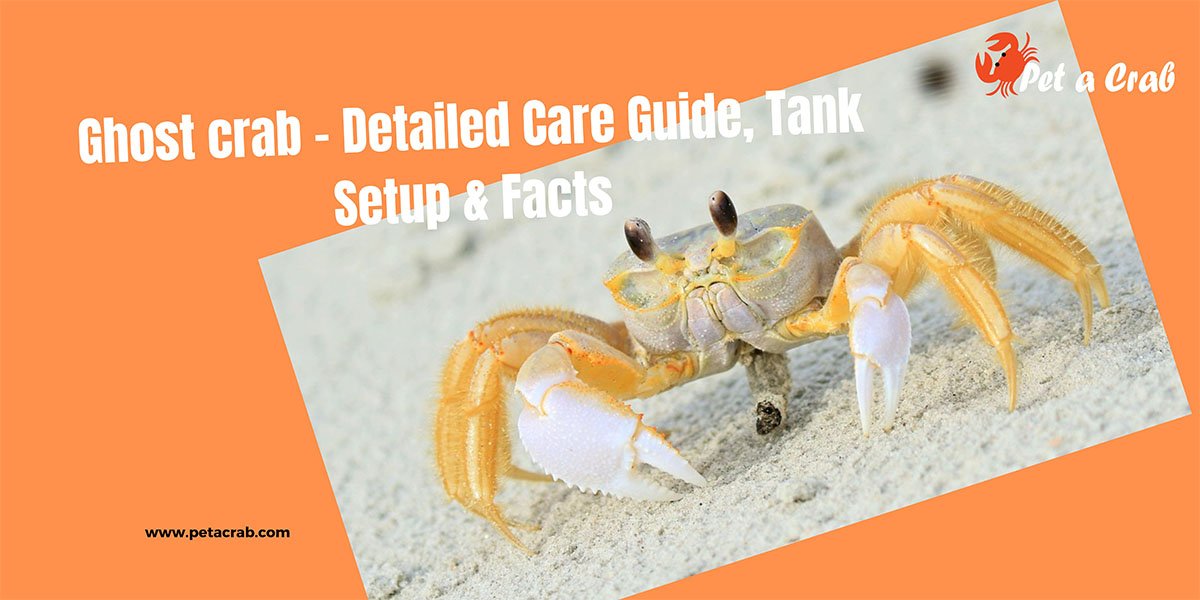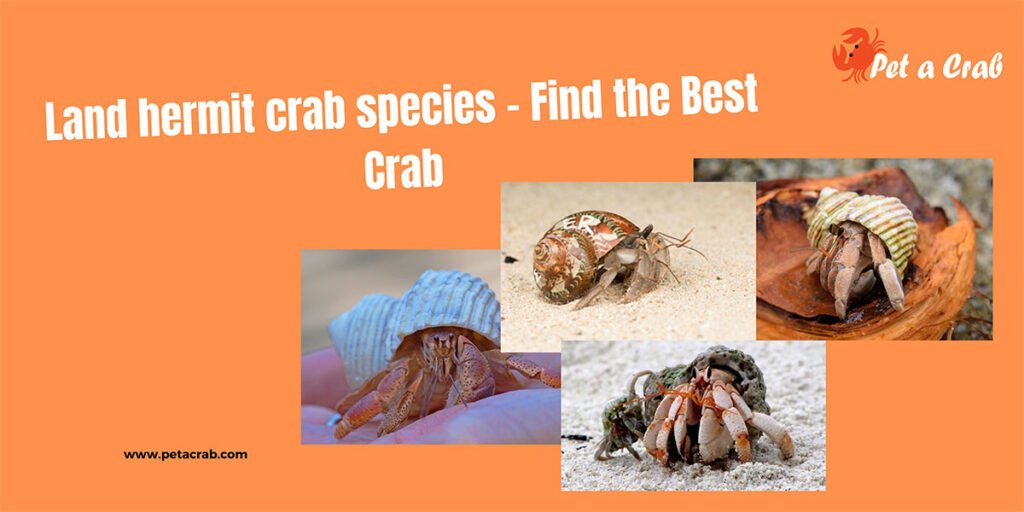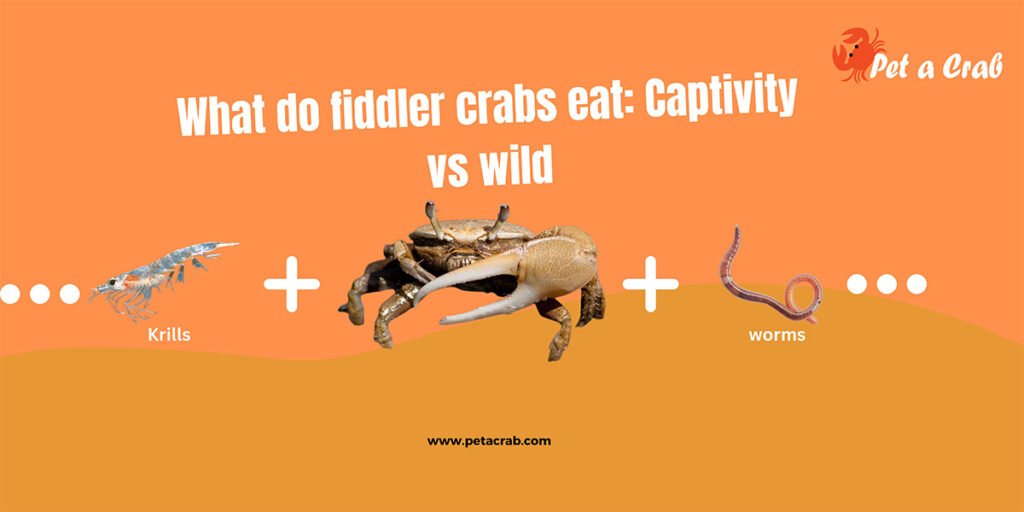The ghost crab is an unpopular pet crab species though they can be a great pet in your tank. As they are terrestrial crabs they will need a small amount of saltwater with a lot of sand substrate mimicking their natural habitat. Following these steps; you can learn a detailed care guide and everything you need to know about the ghost crab.

Quick overview of ghost crabs
Name
The ghost crab is also known as sand crab and red crab (both names refer to different genera of the crab) the scientific name being Ocypodinae. The common name can vary with different species like the white ghost crab, the Atlantic ghost crab (Ocypode quadrata), the painted ghost crab (Ocypode gaudichaudii) and the horned ghost crab (Ocypode ceratophthalma).

Habitat and distribution
They live burrowing into the sandy shores in tropical and subtropical regions; they can be found in widely spread areas in the world from the Bay of Bengal, Indian Ocean to Southern Africa, the Atlantic Ocean and the Mediterranean Sea.
| Size | Up to three inches |
| Color | Pale, Tan, White, Dark brown, purple and Red |
| Lifespan | 3 years average |
| Temperament | peaceful |
| Temperature | 75-85°F (24-29°C) |
| Care Level | easy |
| Breeding | Difficult in captivity |
| Diet | Omnivore |
Quick facts about the Ghost crab
- They are called ghost crabs because of their pale color which camouflages well in the sand making them hard to see, pop up and disappear in the holes and nocturnally.
- Ocypode crabs can change their body color matching the environment.
- Ghost crabs are one of the fastest invertebrates (can reach a speed of 9 miles per hour) to hide and run making them very hard to catch.
- They can burrow very deep up to 50 cm.
- Being nocturnal they spend most of the day hiding into the burrowed deep holes to keep distance from predators.
- They breathe air with their moistened gills with seawater. Their gills are not modified to breathe underwater meaning they can only be for a limited time otherwise they’ll drown.
- Their gills need to be always moistened, that’s why they live near shore and can’t breathe with dry gills.
- There are approximately 20 to 25 species of ghost crabs.
- The male ghost crabs often leave a copulatory plug, made from seminal fluid and sperm. This plug prevents other males’ sperm from reaching the female’s eggs.
How to care for Ghost crab
Tank setup
First, you have to set the crabitat in a proper way, which resembles their natural habitat.
Size
The bigger the tank is the more it would be for them to move freely which they do in their natural habitat. Consider a minimum of a ten-gallon tank with a lid as they can escape without one. Add five gallons for an extra crab you add.
Substrate
Choosing the proper substrate is one of the crucial things for ghost crabs. You can use “beach sand” or ”play sand”. Additionally, you can mix gravel with the substrate but make sure the grains are small and not sharp. Some ghost crab enthusiasts suggest adding coco fiver to the substrate as it helps to retain moisture for a long time.
They’ll need a lot of substrate in the tank as they will likely dig a new hole every day and burrow themselves. The substrate needs to be much deeper so that they don’t feel insecure and not in their wild habitat. Basically, the substrate should be at least 8 inches; three times as deep as the height of the crab.
You should not use substrates like peat moss, wood shavings and calcium sand.
Decoration and hiding places
The ghost crabs need comparatively fewer hiding places as burrowed holes work as hiding places but you can add some big stones to give a beach vibe. For climbing you can add some driftwood, cholla wood and half log pipe. Additionally, you can place 1 or 2 dry almond leaves on the substrate.
Add some fake plans and toys if you want.

Temperature and humidity requirements for ghost crab
The temperature should be kept between 75-85°F (24-29°C) with a humidity of 70% or more. You have to use instruments like a heat pad and a digital thermo hygrometer.
For humidity, you can spray water regularly or you can use a humidifier to prevent drying out their gills. A heating pad is enough to maintain proper temperature but don’t use a heat lamp ever because it will zap the humidity.
A normal LED light is enough for the day; they should get light resembling the natural day and night hours. No need for light at night as they will come out and become active at night. A light at night will disturb ghost crabs’ nocturnal body mechanism. If you want to track the movement at night consider using a dark light.
Water requirements
Provide saltwater (aim for a specific gravity range of 1.005 to 1.010) in a dish prepared with sea salt because regular salt contains iodine with other chemicals that are harmful to ghost crabs. Ensure the water is dechlorinated as chlorine can burn their gill and the water container should not be too deep; there should be an easy way to get out otherwise there will be a chance that the crab will drown and change the water every 1-2 weeks.

Ghost crab tank mates
The best tank mates for ghost crabs will be land hermit crabs like strawberry hermit crabs, Ecuadorian, Caribbean and Ruggie hermit crabs. The land hermit crabs share the same environmental conditions as the ghost crabs except for the extra freshwater bowl for the hermit crab.
If you want to keep other marine and invertebrates along with ghost crabs, you have to divide the tank into two parts sand and water like a paludarium. It will also help mimic the ocean.
What do ghost crabs eat?
They like to eat dead plant and animal matter in the wild; being omnivores they can eat anything. You can provide fresh vegetables and fruits along with meaty food like chicken and shrimp. Though they like rotten food you should not keep leftover food to rot as it will bring bacteria which will harm your ghost crabs; so clean the extra food regularly. You can also give commercial food as a treat once in a while.
Ghost crabs need to molt frequently when they are young, and provide calcium-rich food like cuttlebone which helps them grow hard exoskeletons.
Related article – Freshwater crabs for aquarium.


